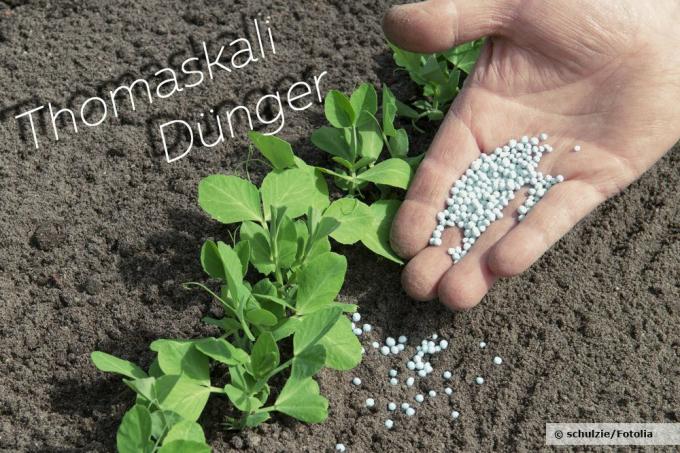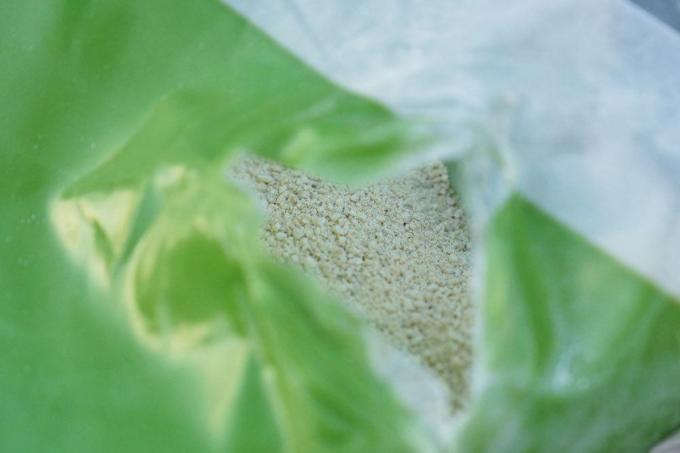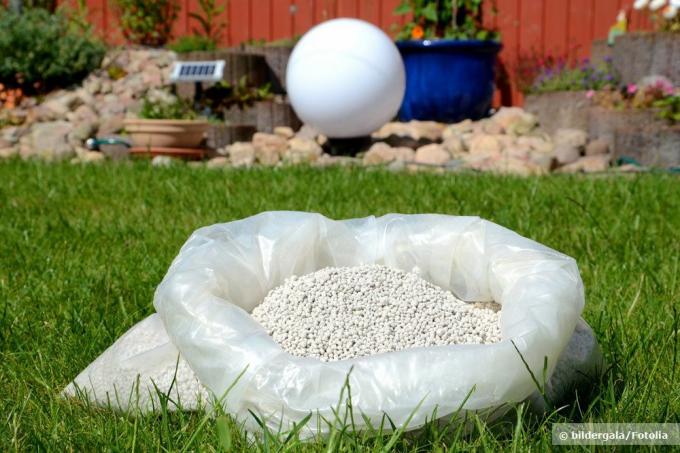
table of contents
- Thomaskali fertilizer
- composition
- effect
- use
- price
Most plants need a period of rest in autumn and winter in order to be able to grow well again in spring and summer. However, this does not mean that it should not be supplied with nutrients during this rest period. However, they then need a fertilizer whose effect is not primarily aimed at growth. Thomaskali has proven to be ideal. So it's high time to take a closer look at him.
Thomaskali fertilizer
In general it can be said that Thomaskali fertilizer is used for the so-called basic fertilization of the soil and plants. It is a so-called PK fertilizer. PK stands for phosphorus and potassium. Both nutrients are absolutely necessary in order to be able to actually exploit the full growth potential that a soil contains. Typically, they are applied outside of the vegetation phase of the plants. But they still make an important contribution to plant growth in spring and summer. Thomaskali also contains other important nutrients. As a result, it is a sophisticated mix of several coordinated components.

Note: Because of its original form, this type of fertilizer is still often called Thomas flour today. However, since the flour caused an extremely high level of dust when it was spread, it is now almost exclusively available as dust-free granules.
composition
As already said, Thomaskali is basically a mixture. In addition to the two central elements phosphorus and potassium, there are other elements in it. The mixture and the mixing ratio can differ depending on the manufacturer. The following composition applies as a standard mixture:
- Phosphorus - 8%
- Potassium or Potassium oxide - 15%
- Magnesium resp. Magnesium oxide - 6%
- Sulfur - 4%
- Filling and other substances depending on the manufacturer - 67% (rest to 100 percent)
By the way, nitrogen as a typical nutrient that can be found in many fertilizers has no place in Thomas potash. The reason for this is easy to explain: nitrogen specifically and directly promotes the growth of plants, which of course should be avoided during the resting phase.
effect
Thomaskali fertilizer works best on slightly acidic soil. The specific mode of action depends on the properties of the individual elements that make it up:
phosphorus
Phosphorus is an extremely important component of a plant's tissue cells. It is one of their most important nutrients. If a plant can absorb enough phosphorus from the soil, it promotes and stabilizes its growth. In addition, it plays a major role in controlling the metabolic processes of a plant. In the soil, phosphorus ensures that individual small earth particles form larger crumbs. And that in turn prevents silting up or erosion of the soil.
potassium
Potassium strengthens the cell tissue of plants and makes an important contribution to an effective gas exchange with the roots. It also ensures stable cell walls and increased internal cell pressure. No plant could survive without potassium, because without the stability it promotes, it would not be able to withstand the various weather conditions. Incidentally, the formation of new leaves would not be possible without him.
magnesium
Magnesium regulates the pH value in the soil and also ensures that other nutrients are available in it. Plants also need it to be able to process proteins and carbohydrates. Magnesium also makes an important contribution to making photosynthesis possible.
sulfur
In order to thrive, plants also need a small amount of sulfur. However, it is increasingly rare to find it in the soil. This is exactly why this element can be found in practically every Thomaskali mixture. It also makes a major contribution to protecting the soil or vitalize the soil.
use
Thomaskali is only available in late autumn or fertilized in winter. As already mentioned, it should only be applied when the plants are resting. The ground should not be frozen deep or covered with snow. Spreading is done either directly by hand or with a small shovel. When it comes to dosing, it is essential to follow the manufacturer's instructions, which can usually be found on the packaging. They usually give a ratio of quantity per square meter.
price
It goes without saying that the prices of Thomaskali depend on the composition and the manufacturer. In addition, of course, the purchase quantity also plays a role. Basically, it can be said that a larger container also leads to a lower price per kilogram. If you buy a kilogram of Thomaskali, you have to reckon with an average price of € 8. If you buy a ten-kilo sack, however, the price per kilo is reduced to € 1.50 to € 2.
Granted this fertilizer is relatively expensive. However, the costs quickly offset each other because fertilization during the growth phase can be limited to inexpensive nitrogen fertilizers.

